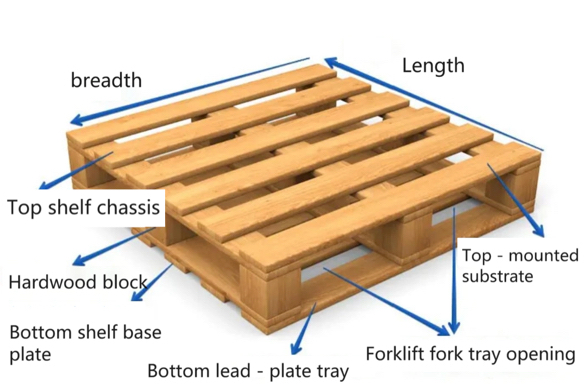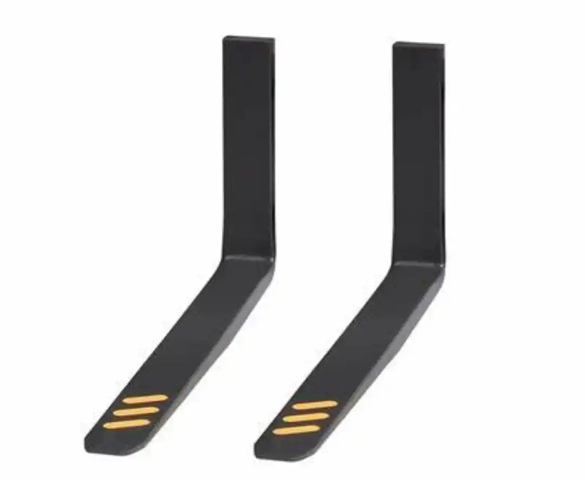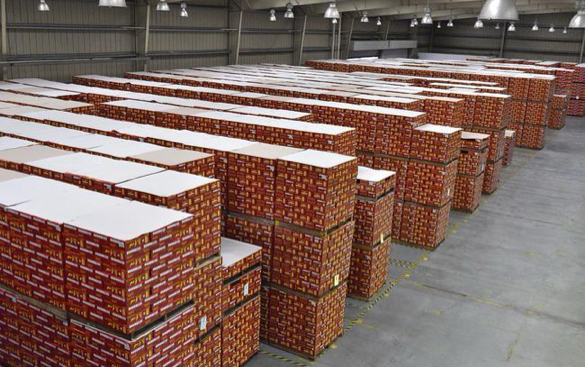
Damaged pallets not only reduce productivity but also significantly increase costs. Improper operation of forklifts is often the main culprit for pallet damage. Over time, the costs of pallets and their maintenance keep rising, which will inevitably impact the company's profits. Although there are various reasons for pallet damage, mistakes in the forklift handling process are the most common. Fortunately, many pallet damage problems can be effectively avoided through standardized operation procedures and enhanced training.
The following are 10 practical tips to reduce forklift damage to pallets:
1.Reduce Travel Speed
Slowing down is a crucial technique for limiting forklift damage to pallets and is closely related to many of the other techniques you will read below. Slowing down gives forklift operators more reaction time to handle pallets correctly and reduces situations such as short forks, improper tooth spacing, and other errors. In addition, slowing down can prevent the mast, forks, or other parts of the lift from hitting the pallets or the products they carry. Reducing rushed operations and using forklifts more gently will also extend the service life of forklifts. It is extremely important to slow down when picking up loads, putting down loads, and stacking or forking pallets.
2.Use Appropriate Pallets
Does the pallet have sufficient load - bearing capacity? Slight differences in the size of pallet materials and the layout of the structure can make a big difference in its load - bearing capacity. Overloaded or mismatched pallets are more likely to break, crack, or shatter and are more vulnerable to damage due to improper forklift handling. Weight distribution is another important factor when using the right pallet. Even if the pallet can bear the load weight, uneven weight distribution will affect its performance. Improper weight distribution will put stress on the pallet in a non - designed way, leading to failure. Using the Pallet Design System (PDS) can help ensure that the pallet is loaded correctly and can perform its intended function.
3.Do Not Turn Until Forks Are Completely Withdrawn from the Pallet
Stringer damage is a type of damage that is extremely harmful to pallets. Stringers are the key components that hold the pallet together. The failure of stringers will immediately lead to a significant loss of the pallet's load - bearing capacity. This particular type of damage is usually caused by forklift drivers releasing the load too early and turning out of the pallet while the forks are still in it, causing the forks to impact the stringers, resulting in strain and damage. Forklift drivers must ensure that the forks are completely withdrawn from the pallet before turning out.
4.Never Drag or Push Pallets
Dragging pallets means pushing them across the floor. Pallets are not designed to be pushed along the ground. Doing so will apply inappropriate lateral stress to the pallet, destroying its load - bearing capacity. Dragging also causes physical damage to the components of the pallet, weakening the parts of the pallet and increasing the probability of failure.
5.Do Not Use Short - Forked Pallets
Short - forking means that the forks of the forklift do not fully insert into the pallet before lifting. Ensure that the front of the forklift mast is as close as possible to the pallet and the product, and the end of the pallet is on the tip of the teeth. Pallets are designed to support the weight of products, requiring the full insertion of forks. When the forks are not fully inserted, additional pressure will be exerted on the deck and nails of the pallet, stressing the pallet and making the possibility of failure or damage greater. Pallets are also more likely to slip and fall when short - forked, especially when handling in a hurry.
6.Properly Use Pallet Spaces

The forks should be inserted into the pallet smoothly and evenly and should not touch any part of the pallet before lifting the load. When the spacing is improper, the forks may hit the stringers, causing damage and impairing the performance of the pallet. Ensuring that the forks do not affect the middle or outer pallet supports will extend the service life of your pallet. Using pallets with beveled stringers can also reduce this problem as it helps guide the forks into the pallet.
7.Spread the Forks Before Lifting

Before lifting the pallet, the teeth of the forklift should be placed as far apart as possible to distribute the load. If the forklift has the ability to automatically adjust the fork spacing (such as adjustable forks), the forks can be spread after entering the pallet. If the tooth spacing must be adjusted manually, the spreading should be done before entering the pallet. Appropriate spacing makes the pallet and the load more stable and reduces the stress applied to the pallet.
8.Use High - Visibility Colored Forks

Painting the top and tip of the forks with eye - catching colors helps forklift drivers see them better through the pallet. From a safety perspective, this is useful not only because the driver will pay more attention to the reach of the teeth but also because people around the forklift will be able to see the teeth more easily. In addition, if damage occurs, the paint may rub off on the pallet or the product, helping to identify the cause of the damage. If each forklift uses a different color, it will be much easier to identify the forklift and the operator involved.
9.Stack Pallets Evenly

Pallets should be stacked evenly. Just as it is necessary to ensure that the weight of the product is correctly distributed on the pallet, when stacking, it should also be ensured that the pallets are square and arranged together. This can prevent uneven weight on certain parts of the pallet, such as corners and lead boards. Concentrated and square pallet stacks can also prevent pallets from tilting and falling, which is a major safety hazard.
10.Optimize Warehouse Layout
This method is not as quick and easy as other methods, but it can be very effective in certain warehouse layouts. The larger the open space in the warehouse, the fewer things the forklift can hit. It also controls the risk of pallet damage by reducing the likelihood of bumps and impacts. In addition, the floor should be clean and free of debris. Forklifts will shake and bounce when running over wood chips and other debris. This not only poses a potential risk to your driver but also subjects the pallet to sudden stress when it bounces on the forks. Bouncing also puts the pallet and its products at risk of falling, which may cause injury to workers.



